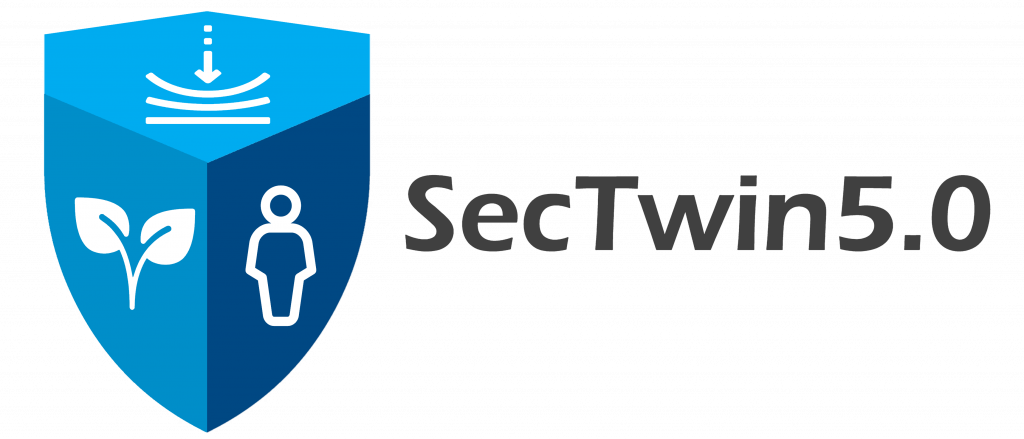SecTwin 5.0
Cybersecurity Platform based on Digital Twins for Industry 5.0
- Ministerio de Ciencia e Innovación, Unión Europea (Next Generation EU), Plan de Recuperación, Transformación y Resiliencia, and Agencia Estatal de Investigación (TED2021-129830B-I00)
- Duration: 01/12/2022 to 31/05/2025
SecTwin 5.0 is an R&D project established under the general conceptualization of Industry 5.0, with the sole mission of designing and developing a Cybersecurity Platform for Digital Twins, corresponding to the fifth industrial revolution[1];. The platform must ensure the integration of services and cybersecurity mechanisms, favoring the interaction of human processes, infrastructures and other Digital Twins.
More specifically, NICS Lab will provide for SecTwin 5.0 a framework for integrating the various security services and systems of the platform, as well as interfaces with all entities and actors involved. Security services will provide various essential protection components. At the same time, various support systems will be established on top of these services to enable 1) resilience for sustainable protection based on automatic decision making, self-learning and constant feedback[2]; 2) physical protection (“safety”) through the system’s own protection against possible cyber-attacks, such as advanced and persistent attacks; and 3) sustainability in terms of computational cost and energy consumption required by the services and support systems of the platform itself.

- SecTwin 5.0: la plataforma andaluza que protege la industria del futuro con ciberseguridad y gemelos digitales, CiberSur.com, 19-05-2025.
- SecTwin 5.0: Blindando la Industria 5.0, Plataforma de Ciberseguridad basada en Gemelos Digitales para la Industria 5.0, 2023.
Entrevista:
Proyecto TED2021-129830B-I00 financiado por:

References
- Cristina Alcaraz and Javier Lopez (2023): Protecting Digital Twin Networks for 6G-enabled Industry 5.0 Ecosystems. In: IEEE Network Magazine, vol. 37, no. 2, pp. 302-308, 2023, ISSN: 0890-8044.
- Alberto Garcia and Cristina Alcaraz and Javier Lopez (2023): MAS para la convergencia de opiniones y detección de anomalías en sistemas ciberfísicos distribuidos. In: VIII Jornadas Nacionales de Investigación en Ciberseguridad (JNIC), Vigo, 2023.
- Cristina Alcaraz and Javier Lopez (2024): Digital Twin-assisted anomaly detection for industrial scenarios. In: International Journal of Critical Infrastructure Protection, vol. 47, pp. 100721, 2024, ISSN: 1874-5482.
- Daniel Morales and Isaac Agudo and Javier Lopez (2023): Private set intersection: A systematic literature review. In: Computer Science Review, vol. 49, no. 100567, 2023, ISSN: 1574-0137.
- Ruben Rios and Jose A. Montenegro and Antonio Muñoz and Davide Ferraris (2025): Toward the Quantum-Safe Web: Benchmarking Post-Quantum TLS. In: IEEE Network, vol. 39, iss. 5, pp. 247-253, 2025, ISSN: 0890-8044.
- Pablo Sánchez-Serrano and Ruben Rios and Isaac Agudo (2025): Privacy-preserving tabular data generation: Systematic Literature Review. In: 19th DPM International Workshop on Data Privacy Management (DPM 2024), pp. 170-180, Springer, Bydgoszcz, Poland, 2025, ISBN: 978-3-031-82348-0.
- Davide Ferraris and Lorenzo Monti (2024): DrATC: Dynamic routing Algorithm based on Trust Characteristics. In: The 20th International Workshop on Security and Trust Management (STM 2024), Springer, Bydgoszcz, Poland, 2024.
- Patxi Juaristi and Isaac Agudo and Ruben Rios and Laura Ricci (2025): Benchmarking post-quantum cryptography in Ethereum-based blockchains. In: 8th International Workshop on Cryptocurrencies and Blockchain Technology (CBT 2024), pp. 340-353, Springer, Bydgoszcz, Poland, 2025, ISBN: 978-3-031-82348-0.
- Cristina Alcaraz and Iman Hasnaouia Meskini and Javier Lopez (2024): Digital twin communities: an approach for secure DT data sharing. In: International Journal of Information Security, vol. 24, no. 17, 2024, ISSN: 1615-5270.
- Cristina Alcaraz and Javier Lopez (2025): Digital Twin Security: A Perspective on Efforts From Standardization Bodies. In: IEEE Security & Privacy, vol. 23, iss. 1, pp. 83-90, 2025, ISSN: 1558-4046.

